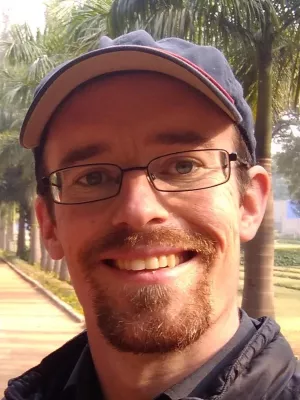
Thomas Pugh
Senior lecturer

Spring photosynthetic onset and net CO2 uptake in Alaska triggered by landscape thawing
Author
Summary, in English
The springtime transition to regional-scale onset of photosynthesis and net ecosystem carbon uptake in boreal and tundra ecosystems are linked to the soil freeze-thaw state. We present evidence from diagnostic and inversion models constrained by satellite fluorescence and airborne CO2 from 2012 to 2014 indicating the timing and magnitude of spring carbon uptake in Alaska correlates with landscape thaw and ecoregion. Landscape thaw in boreal forests typically occurs in late April (DOY 111 ± 7) with a 29 ± 6 day lag until photosynthetic onset. North Slope tundra thaws 3 weeks later (DOY 133 ± 5) but experiences only a 20 ± 5 day lag until photosynthetic onset. These time lag differences reflect efficient cold season adaptation in tundra shrub and the longer dehardening period for boreal evergreens. Despite the short transition from thaw to photosynthetic onset in tundra, synchrony of tundra respiration with snow melt and landscape thaw delays the transition from net carbon loss (at photosynthetic onset) to net uptake by 13 ± 7 days, thus reducing the tundra net carbon uptake period. Two global CO2 inversions using a CASA-GFED model prior estimate earlier northern high latitude net carbon uptake compared to our regional inversion, which we attribute to (i) early photosynthetic-onset model prior bias, (ii) inverse method (scaling factor + optimization window), and (iii) sparsity of available Alaskan CO2 observations. Another global inversion with zero prior estimates the same timing for net carbon uptake as the regional model but smaller seasonal amplitude. The analysis of Alaskan eddy covariance observations confirms regional scale findings for tundra, but indicates that photosynthesis and net carbon uptake occur up to 1 month earlier in evergreens than captured by models or CO2 inversions, with better correlation to above-freezing air temperature than date of primary thaw. Further collection and analysis of boreal evergreen species over multiple years and at additional subarctic flux towers are critically needed.
Department/s
- Dept of Physical Geography and Ecosystem Science
- eSSENCE: The e-Science Collaboration
- MERGE: ModElling the Regional and Global Earth System
- BECC: Biodiversity and Ecosystem services in a Changing Climate
Publishing year
2018-08
Language
English
Pages
3416-3435
Publication/Series
Global Change Biology
Volume
24
Issue
8
Document type
Journal article
Publisher
Wiley-Blackwell
Topic
- Geosciences, Multidisciplinary
Keywords
- Boreal
- Carbon cycle
- Eddy covariance
- Freeze-thaw
- Inversion
- Remote sensing
- Tundra
- Vegetation fluorescence
Status
Published
ISBN/ISSN/Other
- ISSN: 1354-1013

